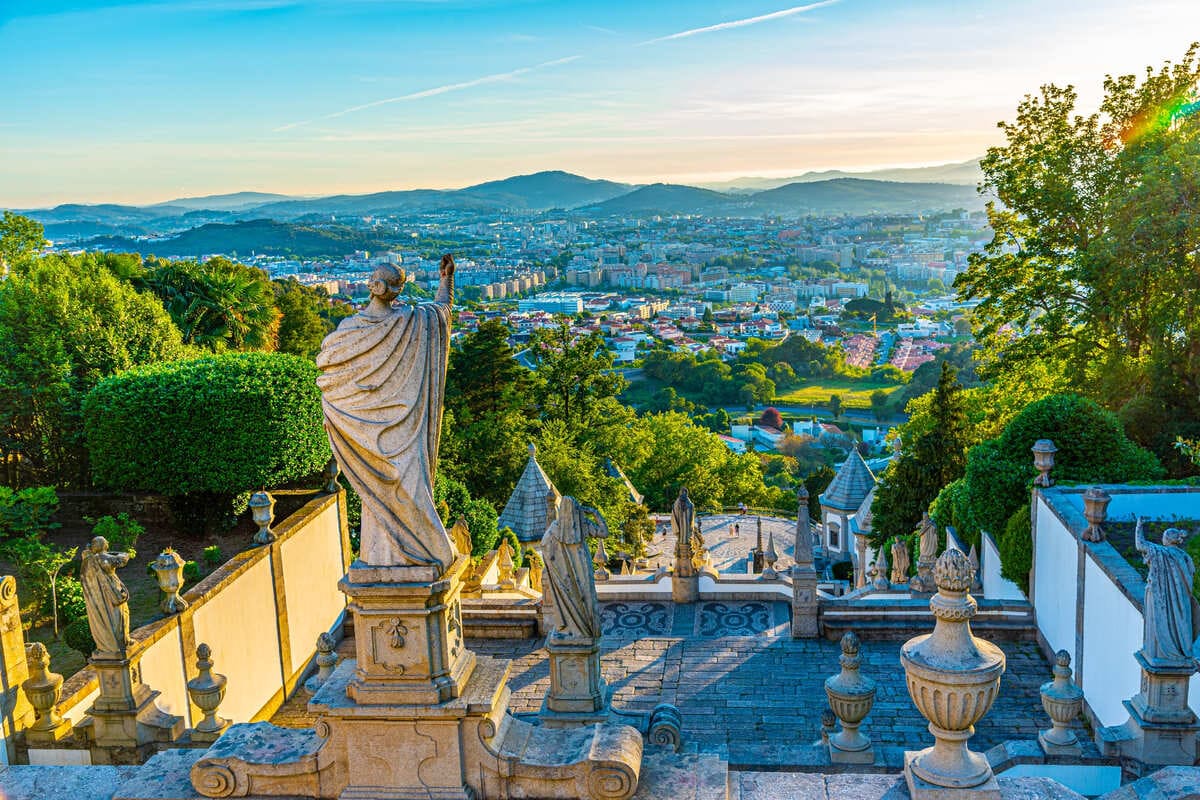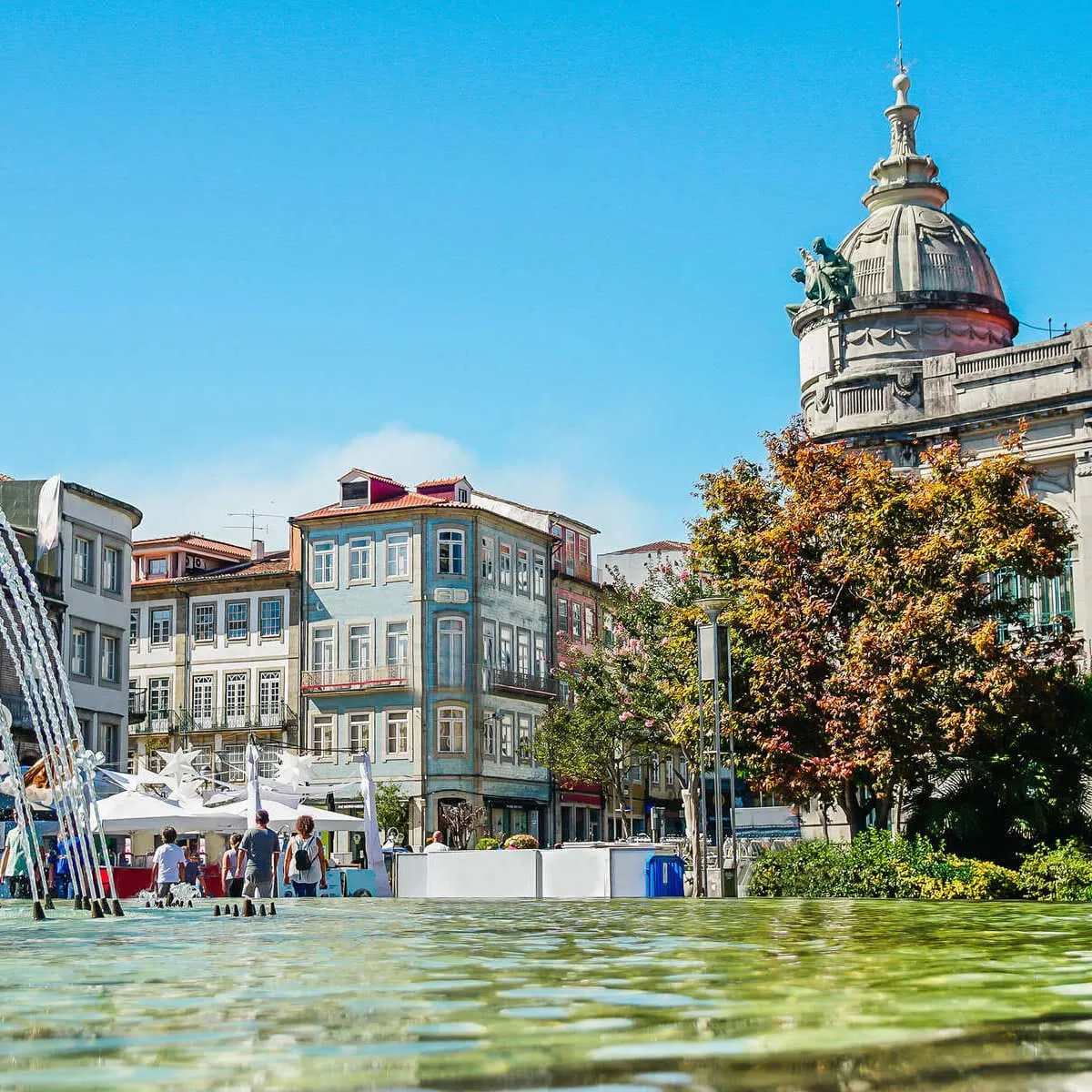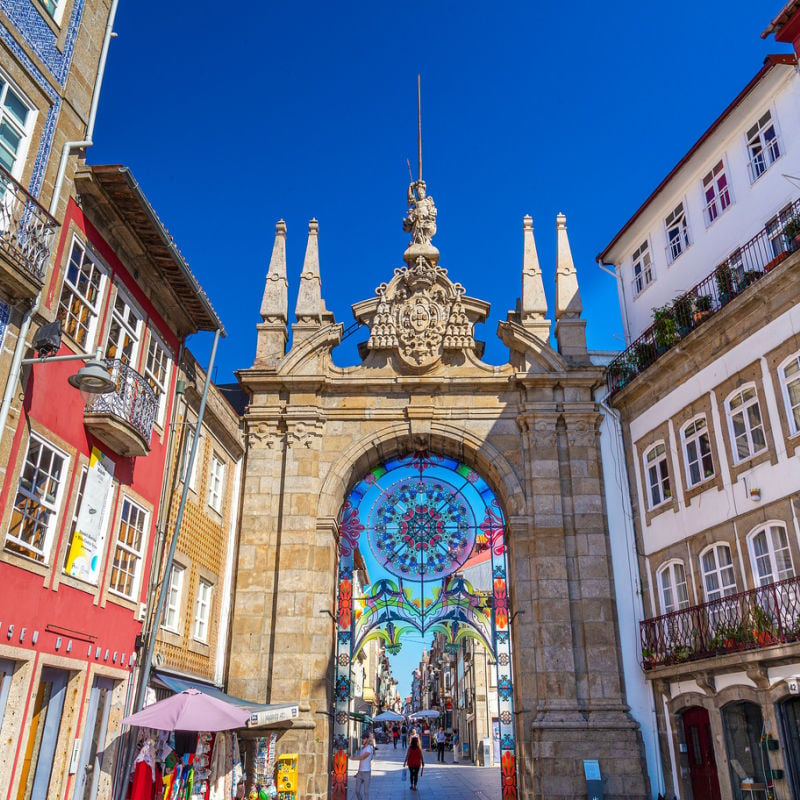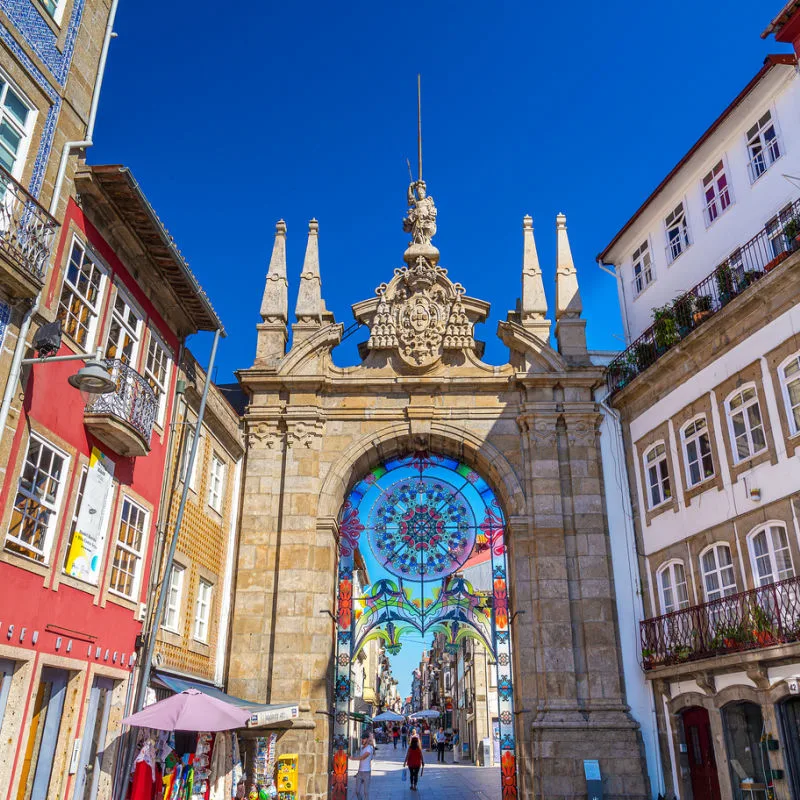
The Eternal City, home to world-renowned landmarks like the Colosseum and the Trevi Fountain, and exuding ancient allure in just about every corner, it’s not hard to see why Rome sits at the top of the bucket list for just about every American who hasn’t yet made it across the pond.
Fascinating as Rome may be (and we would never in a million years claim otherwise), it’s not exactly known for its quaint atmosphere or budget-friendly prices.


Here at Travel Off Path, we’ve covered Europe from its westernmost tip to the far east, from the remote edges of the Scandinavian highlands to the sun-scorched corners of the Mediterranean—including those hard-to-pronounce spots most tourists wouldn’t dream of visiting—and we’ve come to an unexpected conclusion:
More often than not, it’s the unheard-of places, the ones you have to kind of zoom in on the map to even find, that end up fascinating us the most.
What if we told you, for example, there’s a gorgeous city in Portugal dubbed the ‘Portuguese Rome’? Except it’s not crowded at all, and nowhere near as expensive as its Italian counterpart:
Welcome To Braga, The Rome Of Portugal


Located in the ‘far north’ of Portugal, further north even than the bustling Porto, Braga is a historic city that’s home to over 148,000 residents, and quite compact, but mighty in culture:
Though it has one of the best-preserved medieval centers in Portugal, criss-crossed by winding, cobble-paved pathways, and lined with centuries-old houses with colorful façades, it’s yet to be discovered by most tourists.
Last year, the Municipality of Braga recorded around 680,000 tourist overnights, a 6.3% increase over 2023, but still significantly lower than in major Portuguese holiday destinations, like Porto itself, only 40 miles away, Lisbon, or the Algarve.


For instance, Porto registered 2.967.090 guests in the same period, and it’s not like it’s a lot bigger as a city than Braga, with around 232,000 residents.
Boring data aside, this can only mean one thing: crowd-free plazas flanked by cozy cafés frequented almost exclusively by locals, no long lines in sight to get into any museum, and hardly any large tour groups around to photobomb your Insta-perfect shot.
Why Is Braga ‘The Portuguese Rome’?
Now, if you’re wondering why Braga is dubbed the Portuguese Rome, it’s quite simple: much like the Italian capital, its origins can be traced back to a Roman settlement founded in 16 B.C., under the name Bracara Augusta.


Braga was an important Roman colony in Ancient Times, serving as the capital of the province of Gallaecia, equipped with all the must-haves for a city of its stature: aqueducts, a forum, luxurious baths, and a theater.
Much of it now lies in ruins beneath the modern-day Braga, but the Roman heritage is not the only reason why the Rome connection exists:
Braga is particularly distinguished for its impressive ensemble of Baroque monuments, with more than 30 richly decorated churches and splendid palaces.
The most famous Braga landmark is the Sanctuary of Bom Jesus do Monte, a pilgrimage site located atop a hill accessible via an arduous 600-step path, though the majestic Archbishop’s Palace, and its adjacent Santa Bárbara Garden, are equally impressive.


Ancient Wonders Galore
Down in the historic center, there stands an imposing Braga Cathedral, erected in the Middle Ages, and walking around town, you’ll be literally stumbling upon pieces of History:
Arco da Porta Nova is one of the oldest city gates, built back in the year 1373. Only a few steps away, the Castle Keep (Torre de Menagem) is yet another 14th-century architectural masterpiece, and the best-preserved bit of Braga’s once-impressive fortifications.
As we pointed out before, Bracara Augusta is buried beneath Braga, so don’t come expecting to find a mini Colosseum, or a plethora of intact pagan temples: the Roman charm is there, for sure, but it is definitely subtle.


That being said, some Roman structures can still be visited, including the Thermae of Maximinus, a public baths complex from the 3rd century AD, among the largest discovered in Portugal to this day, and Fonte do Ídolo, a 1st-century AD granite fountain with rare Latin inscriptions.
How Does Braga Compare To Rome When Gastronomy Is Concerned?
Similar to Rome, Braga is a foodie destination of the first order. You could have pizza and pasta at Italian-style trattorie here, for sure, but everyone knows the thing Portugal truly excels at is, well, Portuguese cuisine:
If you’re looking for an iconic lunch spot, look no further than Frigideiras do Cantinho: originally established as a tavern in 1796, this traditional eatery is well-loved by locals for its meat-filled pastries, and for the culture buffs out there, there are visible Roman ruins right underneath it!


For that hearty francesinha with freshly-harvested eggs and the tenderest meat, and the reddest, richest Porto wine you’ll ever try, Taberna Belga is a clear winner, though Velhos Tempos (literally translated as ‘Old Times’), comes a close second with their home-cooked grub.
Don’t worry, we won’t forget to tip you off on the best pastel de nata in Braga, as customary in every article we write about up-and-coming Portuguese cities.
In Braga’s case, that would be Casa das Natas, purely due to their variety of flavors: there’s the classic, can’t-go-wrong-with custard one, though the true stars of the show here are the chocolate-topped and cinnamon-spiked versions.
How Affordable Is Braga?


Portugal is considered the most affordable destination in Western Europe: with the exception of perhaps Lisbon and Porto, two of its largest urban centers, most sit-down meals in local restaurants cost average $15, and takeout, bakery snacks usually cost under $3.
In Braga, it’s no different.
Casual meals are typically $10–$11, whereas three-course dinners in mid-range restaurants average $27–$30 per person, which we’d argue is a very reasonable ask.
In recent years, we’ve noticed tourists complaining more regularly about the rising accommodation costs in Portugal, despite the overall affordability.


Though food is generally on the cheaper end, hotels in large cities like Lisbon can average $148-a-night, in line with far more expensive Southern European destinations.
In Braga, however, prices have remained notoriously low. An overnight stay in a double room at the Braga Bells Guesthouse will set you back $21 per adult (or $42 as a couple). At the local Ibis, rates start from $34.50 per adult (or $69 for 2 adults in the same reservation).
According to Budget Your Trip, the average daily cost of a Braga vacation is $166 per person.
How To Get To Braga From The U.S.


Last but not least, wondering how you can get to Braga all the way from America?
Needless to say, Braga doesn’t have its own international airport, so most travelers getting there fly in and out of Porto (OPO), between 37 and 49 minutes away by train.
Train tickets from the city of Porto to Braga average $6 when booked in advance, and around $14 for same-day or last-minute reservations.
If you’re heading to Portugal this summer, or later in the fall, make sure you double-check the entry rules that apply to U.S. passport holders with our new, free-to-use Entry Requirement Checker tool.
Vinicius Costa
Vini, our senior lead writer at Travel Off Path, has over 60+ countries under his belt (and currently weaving tales from Paris!), and a knack for turning off-the-beaten-path experiences into informative stories that will have you packing your bags.
The Travel Off Path Advantage: Your Travel Toolkit
Subscribe To Our Latest Posts
Enter your email address to subscribe to Travel Off Path’s latest breaking travel news, straight to your inbox.
Please visit:
Our Sponsor
